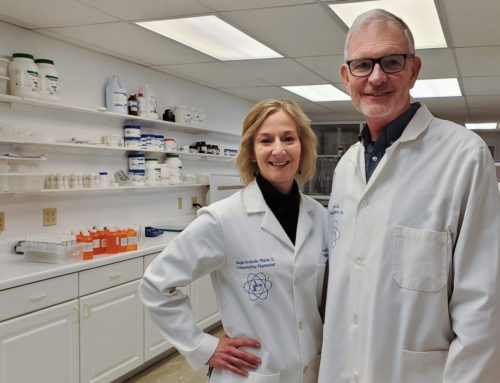How is it possible that one medication can impact such a wide range of disorders?
The disorders listed below all share a particular feature: in all of them, the immune system plays a central role. Low blood levels of endorphins are generally present, contributing to the disease-associated immune deficiencies.
download- click this link
Proposed-uses-of-LowDoseNaltrexone
Are there any side effects or cautionary warnings?
LDN is typically well tolerated. Occasionally, during the first week’s use of LDN, patients may complain of some difficulty sleeping. This rarely persists after the first week. So a typical dose started working with your provider and Good Life Pharmacy would be to titrate from 1.5mg at bedtime for 1 week, then increased to 3mg at bedtime for 1 week, then increased to 4.5mg at bedtime.
Because LDN blocks opioid receptors throughout the body for three or four hours, people using medicine that is an opioid agonist, i.e. narcotic medication — such as Ultram (tramadol), morphine, Percocet, Duragesic® patch or codeine-containing medication — should not take LDN until such medicine is completely out of one’s system. Patients who have become dependent on daily use of narcotic-containing pain medication may require 10 days to 2 weeks of slowly weaning off of such drugs entirely (while first substituting full doses of non-narcotic pain medications) before being able to begin LDN safely. Those patients who are taking thyroid hormone replacement for a diagnosis of Hashimoto’s thyroiditis with hypothyroidism ought to begin LDN at the lowest range (1.5mg for an adult). Be aware that LDN may lead to a prompt decrease in the autoimmune disorder, which then may require a rapid reduction in the dose of thyroid hormone replacement in order to avoid symptoms of hyperthyroidism. Full-dose naltrexone (50mg) carries a cautionary warning against its use in those with liver disease. This warning was placed because of adverse liver effects that were found in experiments involving 300mg daily. The 50mg dose does not apparently produce impairment of liver function nor, of course, do the much smaller 3mg and 4.5mg doses. People who have received organ transplants and who therefore are taking immunosuppressive medication on a permanent basis are cautioned against the use of LDN because it may act to counter the effect of those medications.
Limited research is available for the use of LDN in a variety of diseases including:
- ALS (Lou Gehrig’s Disease)
- Alzheimer’s Disease
- Ankylosing Spondylitis
- Autism Spectrum Disorders
- Behcet’s Disease
- Celiac Disease
- Chronic Fatigue Syndrome
- CREST syndrome
- Crohn’s Disease
- Emphysema (COPD)
- Endometriosis
- Fibromyalgia (for more information click here)
- HIV/AIDS
- Irritable Bowel Syndrome (IBS)
- Multiple Sclerosis (MS)
- Parkinson’s Disease
- Pemphigoid
- Primary Lateral Sclerosis (PLS)
- Psoriasis Rheumatoid Arthritis
- Sarcoidosis
- Scleroderma
- Stiff Person Syndrome (SPS)
- Systemic Lupus (SLE)
- Transverse Myelitis
- Ulcerative Colitis
- Wegener’s Granulomatosis
Cancer Types:
- Bladder Cancer
- Breast Cancer
- Carcinoid Colon & Rectal Cancer
- Glioblastoma
- Liver Cancer
- Lung Cancer (Non-Small Cell)
- Lymphocytic Leukemia (chronic)
- Lymphoma (Hodgkin’s and Non-Hodgkin’s)
- Malignant Melanoma
- Multiple Myeloma
- Neuroblastoma
- Ovarian Cancer
- Pancreatic Cancer
- Prostate Cancer (untreated)
- Renal Cell Carcinoma
- Throat Cancer
- Uterine Cancer



